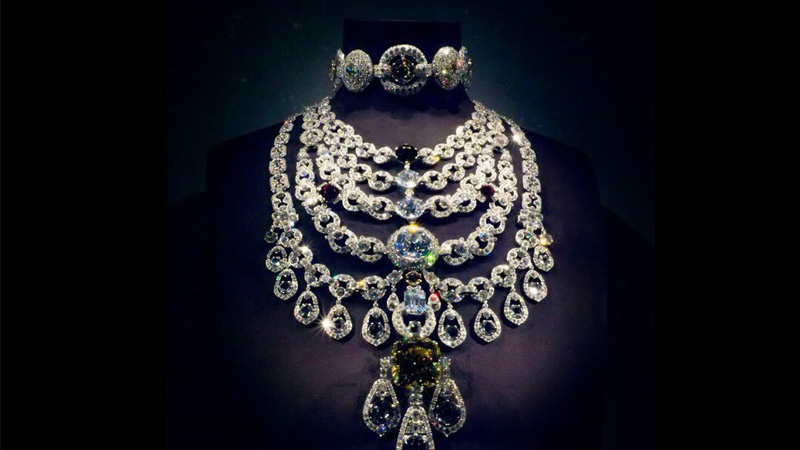 In the 1920s, the Maharaja of Patiala approached the House of Cartier with a very special request. Bhupinder Singh wanted them to create a necklace made from gems he had brought with him to Paris (it is said that the Maharaja brought trunks full of loose gems from India). To date, this has been Cartier’s single largest commission.
In the 1920s, the Maharaja of Patiala approached the House of Cartier with a very special request. Bhupinder Singh wanted them to create a necklace made from gems he had brought with him to Paris (it is said that the Maharaja brought trunks full of loose gems from India). To date, this has been Cartier’s single largest commission.
The Patiala necklace was thus created with 2,930 diamonds set is five ladis (chains) and a neck collar. The centrepiece of the necklace was the 234.6 carat De Beers – which he had inherited from his father. It also has several Burmese rubies.
According to The New York Times, “The necklace is basically Art Deco in style; Cartier was at the vanguard of designing jewellery, clocks and objets d’art in the Deco style. When the necklace was completed in 1928, Cartier was so proud of the craftsmanship that it asked if the necklace could be exhibited before being sent to India. The maharajah agreed.”
According to The New York Times, ‘The necklace is basically Art Deco in style; Cartier was at the vanguard of designing jewellery, clocks and objets d’art in the Deco style. When the necklace was completed in 1928, Cartier was so proud of the craftsmanship that it asked if the necklace could be exhibited before being sent to India
Singh wore the necklace regularly till his death in 1938. It was then passed on to his son Maharaja Yadavindra Singh. It was last worn in public by the young Maharaja in 1941.
After seven years, the necklace was stolen and no one had any idea where it was till a 1982 Sotheby’s auction in Geneva where the De Beers diamond made a dramatic entrance.
 More than a decade later, another part of the necklace (the five ladis) was found by a Cartier associate in London, at a second-hand jewellery shop. The skeleton of the necklace was eventually bought by Cartier and they brought the necklace to its former glory by replacing the missing stones with replicas. It took four years to complete the restoration.
More than a decade later, another part of the necklace (the five ladis) was found by a Cartier associate in London, at a second-hand jewellery shop. The skeleton of the necklace was eventually bought by Cartier and they brought the necklace to its former glory by replacing the missing stones with replicas. It took four years to complete the restoration.